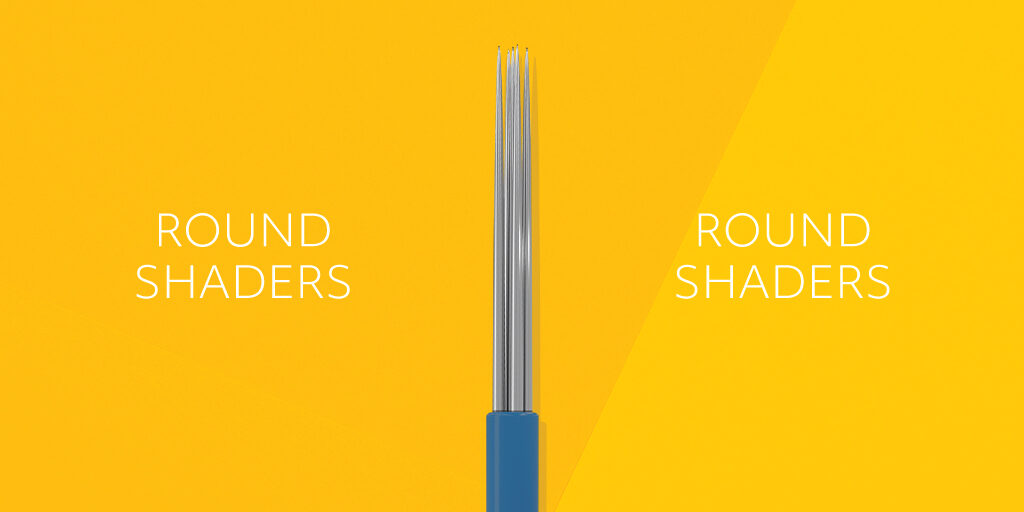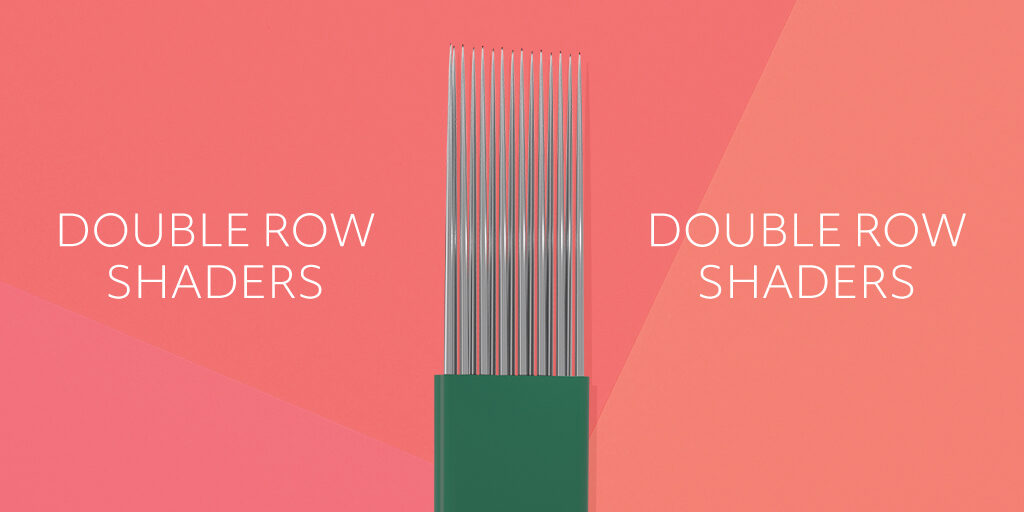Microblading & Microshading needles explained
Firstly, let’s quickly go over the different terminology and techniques used in microblading and microshading procedures.
Microblading is a procedure that creates hair-like strokes of pigment into the skin using microblading needles (or ‘microblades’). Microshading uses microshading needles (or ‘manual shaders’) to create a pixel-like shading effect (commonly referred to as powder brows, ombré brows or combination brows). Each is a standalone technique but can also be used in combination with one another depending on desired result.
While hair strokes and shading effects can be achieved using a PMU machine and needle cartridge, for the purpose of this article, we will be referring to manual needles and shaders only.
It's worth mentioning that manual shaders are also referred to as shading microblades or microblading shaders but don't worry, they are the same thing.
With so many different configurations when it comes to microblading needles, we know that it can be overwhelming when trying to choose the right configuration for your kit - especially when you’re a beginner. The blades you opt for will depend on things like your client’s skin, brow area, brow style, as well as your own personal preference.
Below, we have outlined the different types of needles available based on the treatment, technique, and desired results so you can choose the right blades for your client’s treatment.
There are several widely accepted terms for each needle configuration although you may find some brands refer to them differently. This can cause confusion so you may want to check needle shape and diameter across brands for comparison.
Microblading needles
Curved blades
Also referred to as angled, curved edge or slant blades - curved blades are some of the most popular blades amongst microblading artists. Perfect for creating beautiful, crisp hair strokes – the number of pins in the blade you use will depend on how long or short you want the hair strokes to be.

Flat U-blades
As the name states, the pins on these blades are in the shape of the letter U. These blades are great for creating longer or short curved hair strokes and are traditionally the most common used.

Nano blades
Nano blades are named as such due to the diameter of the needle, not the shape. They contain thinner needles (usually 0.16mm diameter or less) which allow microblading artists to create extra-fine hair strokes with more precision and accuracy. At Killer Beauty, we offer nano versions of the curved edge microblades to create those ultra-thin delicate strokes, but nano needles come in other shapes too such as Flat U.

Microshading needles
Round shaders
Round shaders are a great tool for implanting more pigment, faster and are suited to shading larger areas. However, we also offer round shaders with a small group of pins for quicker shading of any delicate areas.

Double row shaders
These blades include two rows of flat pins which can be used in a similar way to flat shaders, to implant slightly more pigment than a regular flat shader to a wider area and add shading throughout the brow.

4 Bunch 3 Round shader
This 12-pin blade consists of 4 rows of 3 round needles, for shading larger areas of the brow. This configuration allows artists to implant pigment faster whilst still creating a soft, ‘dotted’ shaded effect.

Once you have a basic understanding of the different styles of microblades, you can then move on to understanding pins.
The pins are the group of needles that make up the microblade itself and how many pins there are in each blade can vary. With so many options available, choosing which number of pins and diameter to use for your treatment can be daunting!
So, we have broken it down into easy-to-understand categories for you below:
3-9 pins: Found in the Killer Beauty round shaders, these manual tools are perfect for adding density and fullness to very small, delicate areas of the brow. The small number of needles helps achieve precision and accuracy when filling in any narrow gaps.
11-15 pins: This number of pins can be found on our Double Flat and Curved Edge microblades, ideal for creating medium length hair strokes with medium thickness. It is worth remembering that the more pins in a microblade, the longer the hair stroke it will create. The mid-range of 11-15 pins is hugely popular amongst microblading artists and a great starting point when identifying which blades work best for you.
16-18 pins: Found in Killer Beauty Bold and Flat microblades, more suited to creating the outline and structure of the brow or for creating longer, bolder hair strokes for a fluffy-brow effect.
And the final hurdle in having a full understanding of microblades and which is right for you? The needle diameter.
Which needle diameter you opt for will depend mostly on the client’s skin type:
0.16-0.20mm: Suitable for thinner or more mature skin, any sun-damaged skin or skin regularly exposed to skincare ingredients such as retinols, acids or vitamin C - which can create a more fragile canvas.
0.20-0.25mm: Ideal for use on younger ‘normal’ skin without excess oils/dryness, healthy in appearance, with no known skin damage.
0.30-0.35mm: Suitable for thicker, tougher skin – usually oily skin types with large pores and a noticeable texture.
There you have it! Your guide to all the different microblading needles available and what stroke style and skin type they are suitable for.
Above, we have covered our range of Killer Beauty microblades, but we also stock other global brands such as Tina Davies & Jenn Boyd. Needle configurations may vary slightly brand to brand, but the basic differences remain the same.
Your microblading kit should always include a range of needles that cover the whole brow area, different hair stroke styles and for the range of skin-types you will be working on, but it goes without saying that you need to invest in professional microblades that are quality tested.
So, make sure you do your research and train with an accredited academy or trainer to give you the best possible start in your microblading journey.
Once you are qualified, lots of practice on latex skins is paramount when trying out new blades and perfecting your skills.
